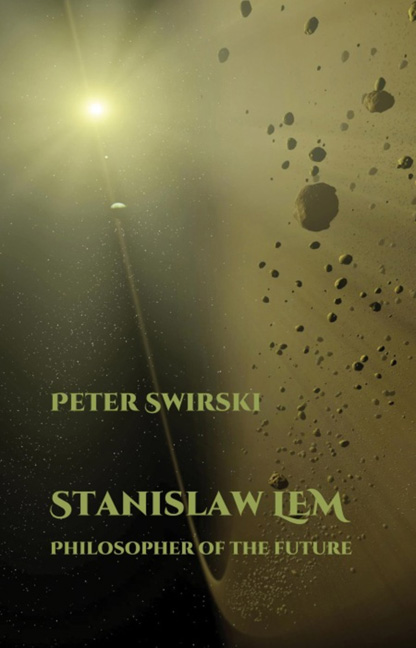Book contents
5 - Errare Humanum Est
from PART II - ESSAYS
Summary
The Invincible Has Landed
One of Lem's core epistemological concerns is the concurrent inevitability and inadequacy of conceptualizing the world along anthropomorphic lines. The Invincible (1964) contains an illuminating development of this theme. This bestselling science–thriller dramatizes the vagaries of a typical scientific process of investigating the Unknown while reflecting on the patterns and limitations of human cognition. My analysis aims to reveal how Lem uses his fictions to model not only cognitive problems in need of inquiry, but also problems of inquiry itself.
The Invincible opens with the Earth space cruiser, the Invincible, landing on Regis III, a desert Earth–type planet in the Lyre constellation. Eight years have passed since the disappearance of its sister ship, the Condor, and the Invincible is on a military and scientific mission to investigate the mystery. Led by Horpach, the Commander, and Rohan, the Navigator, the crew commence the exploration of the alien planet.
From the very start Regis III abounds with unsettling mysteries. Flora and fauna are extinct, yet marine life teems in the ocean, although only below the depth of 150 yards. The evolutionists on board speculate that an unknown factor must be preventing life from going on land. Interestingly, local fish have a peculiar sense that reacts to minute variations in the magnetic field, allowing them to elude human probes with astonishing alacrity and accuracy. Another mystery is the menacing presence of a Black Cloud of metallic micro–elements (“flies”).
The exploratory sallies increase the scientists’ knowledge of the planet, but only deepen the mystery. At one point one of the satellites released into orbit around the planet discovers the lifeless ruins of what looks like a “city”. Although on inspection these geometrically regular structures do not resemble any terrestrial settlement, they are undoubtedly of artificial origin. Wild speculations surface, linking the metallic ruins with the extinct civilization of the star Zeta Lyrae.
All this turmoil pales, however, next to the horror found in the wreck of the Condor. Its super–durable hull is pitted in an unknown way and the interior is a scene of insane devastation.
- Type
- Chapter
- Information
- Stanislaw Lem: Philosopher of the Future , pp. 119 - 140Publisher: Liverpool University PressPrint publication year: 2015



